Croatia joins the Euro. That’s right: Croatia is the next country to adopt the Euro as its national currency. Find out all you need to know in the questions and answers below. Put together by the currency experts at Leftover Currency Limited.
When will Croatia join the Euro zone?
Croatia will join the Euro zone on 1 January 2023. On this day the national currency of Croatia will no longer be the Croatian Kuna, but instead will be the Euro. This was formally approved by the Council of the European Union on 12 July 2022.The European Central Bank (ECB) already supervises Croatian banks since 1 October 2020, when the close cooperation framework between the ECB and the Croatian National Bank ‘Hrvatska narodna banka’ began.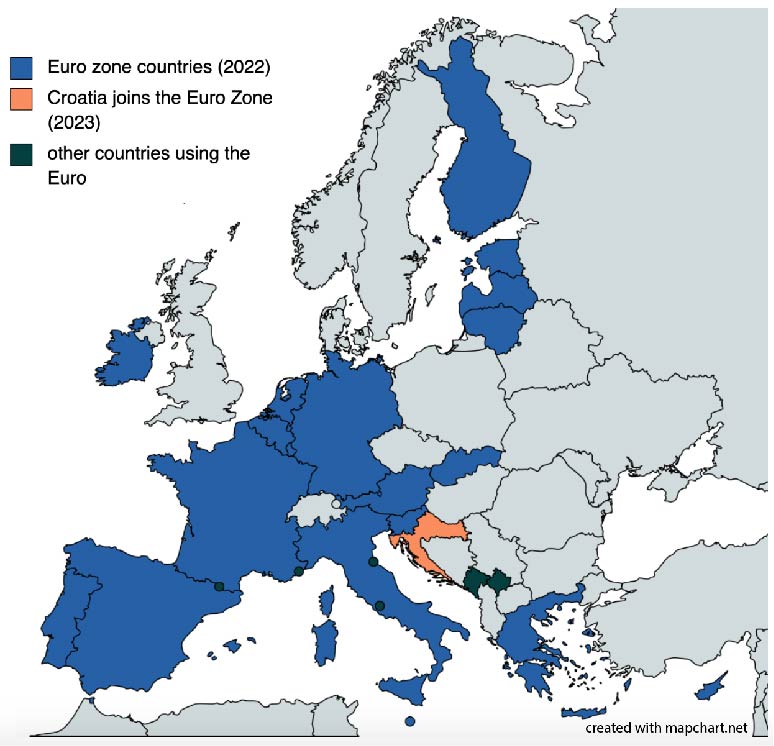
What is the national currency of Croatia before 2023?
Until 31 December 2022 the national currency of Croatia is the Croatian Kuna.Kuna banknotes and coins remain legal tender in Croatia until the end of 2022.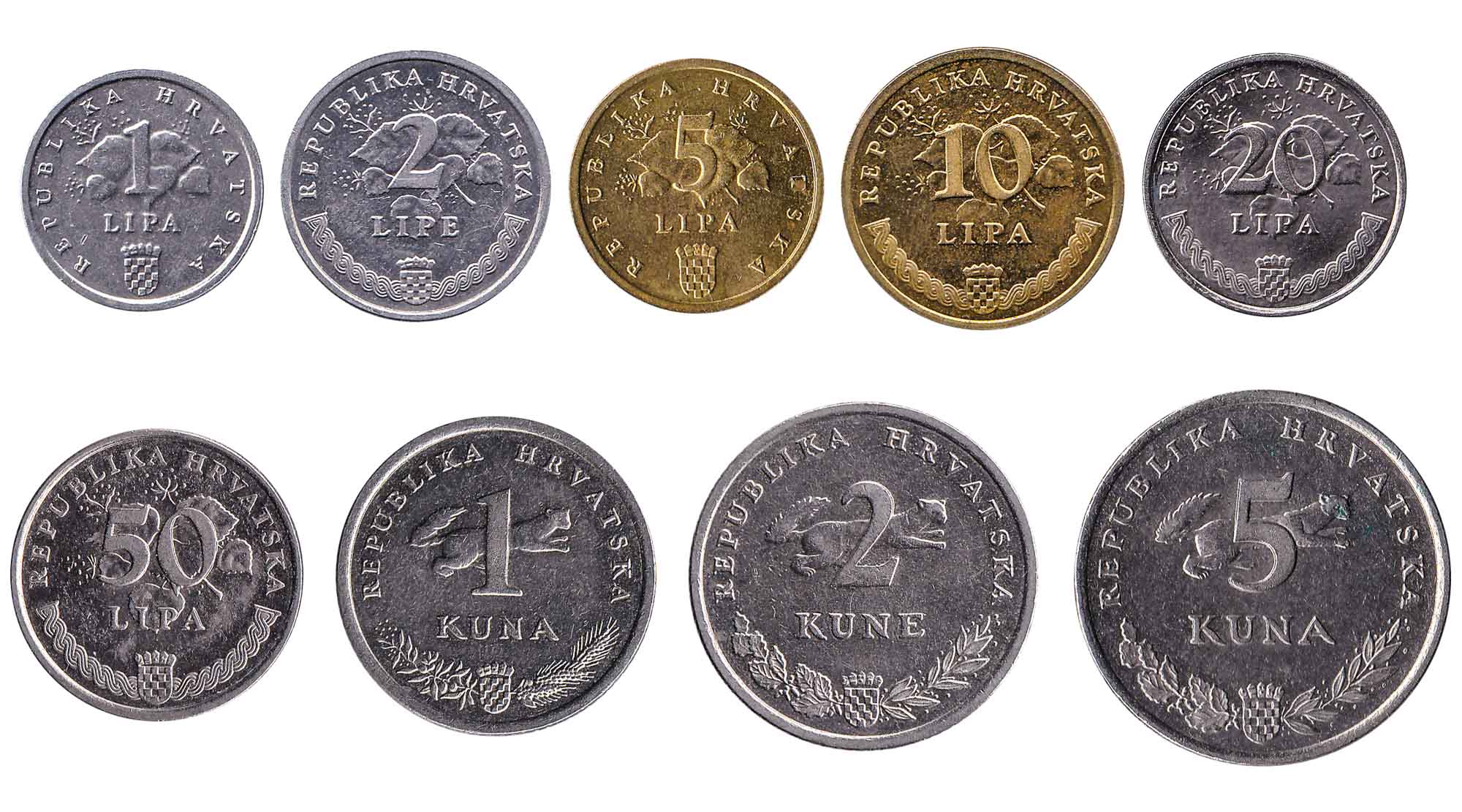
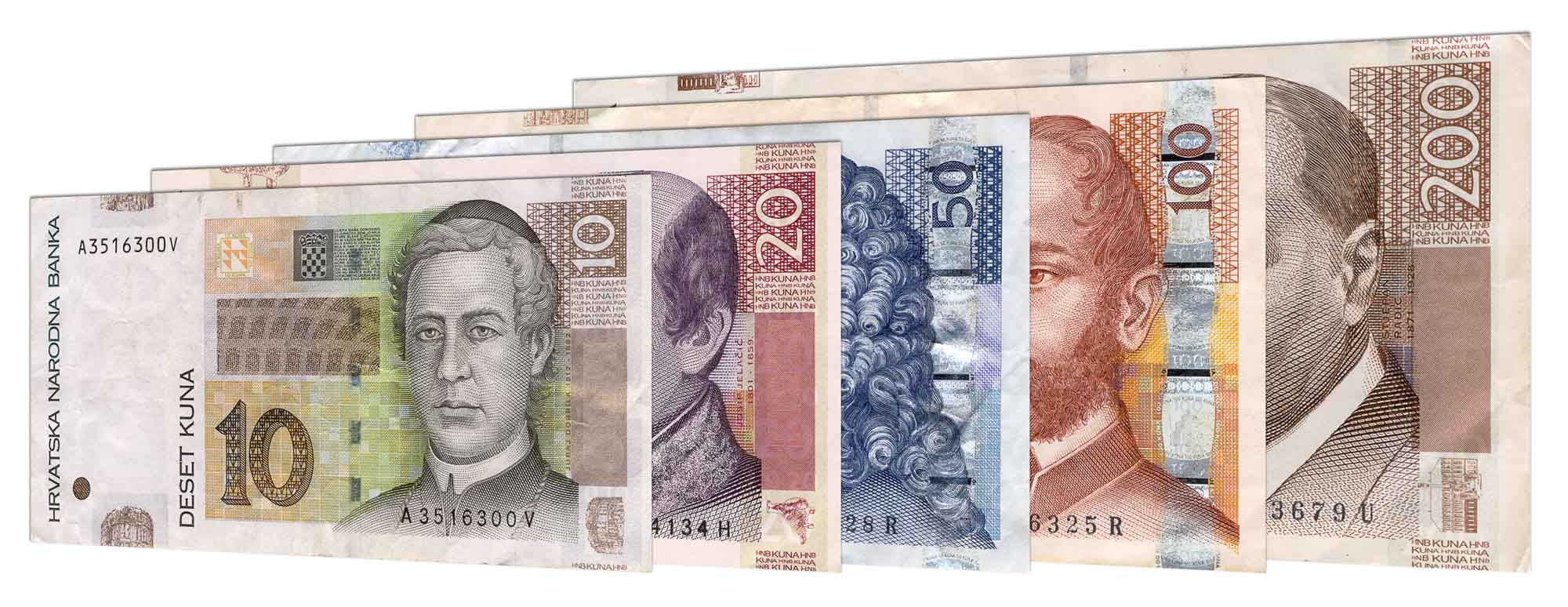
What is the fixed conversion rate between the Kuna and the Euro?
The conversion rate between the Euro and the Kuna was fixed at 7.53450 kuna per 1 euro, or €0.13272 euro for 1 kuna. Mental arithmetic tips: To quickly calculate the conversion in your head you can:- multiply by 30, then divide by 4 for the conversion from euro to kuna.
- divide by 10, then divide by 3, then multiply by 4 for the conversion from kuna to euro.
The above mental calculation tip uses a rounded rate of 7.5 kuna to the euro. Below you can find a handy conversion helper for the exact conversion value.
Conversion from Kuna (HRK) to Euro (EUR)
- 1 HRK = 0.13 EUR
- 2 HRK = 0.27 EUR
- 5 HRK = 0.66 EUR
- 10 HRK = 1.33 EUR
- 20 HRK = 2.65 EUR
- 50 HRK = 6.64 EUR
- 100 HRK = 13.27 EUR
- 200 HRK = 26.54 EUR
- 500 HRK = 66.36 EUR
- 1000 HRK = 132.72 EUR
Conversion from Euro (EUR) to Kuna (HRK)
- 1 EUR = 7.53 HRK
- 2 EUR = 15.10 HRK
- 5 EUR = 37.67 HRK
- 10 EUR = 75.35 HRK
- 20 EUR = 150.69 HRK
- 50 EUR = 376.73 HRK
- 100 EUR = 753.45 HRK
- 200 EUR = 1506.90 HRK
- 500 EUR = 3767.25 HRK
- 1000 EUR = 7534.50 HRK
Until when can I spend my Croatian Kuna banknotes and coins in Croatia?
On 1 January 2023 the Euro becomes Croatia’s new national currency. From this date, there will be a period of two weeks during which both the Euro and the Croatian Kuna are in circulation in Croatia. You can continue to spend Kuna banknotes and coins in Croatian shops until (and including) 14 January 2023.After 14 January 2023 you can no longer use Kuna banknotes and coins for payments in Croatia. From that date onwards all transactions in Croatia are paid for in Euros.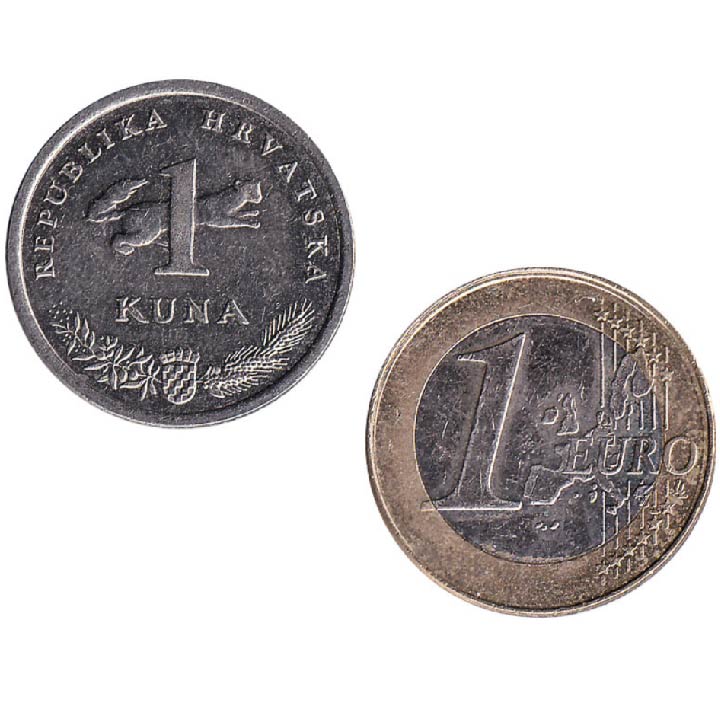
Until when can I exchange my Croatian Kuna banknotes and coins?
If you have leftover Croatian Kuna banknotes or coins from a previous holiday: You can continue to exchange these even now that Croatia joins the Euro. Here are the deadlines you need to be aware of.Exchange of Croatian Kuna banknotes
Until the end of 2022 you will be able to exchange your Croatian Kuna banknotes at most bureaus de change and banks. From 2023 onwards, banks and bureaus de change in the UK will no longer accept Croatian Kuna banknotes for exchange. However here at Leftover Currency we continue to exchange all Croatian Kuna banknotes indefinitely, even after Croatia has switched to the Euro.At Leftover Currency we specialise in the exchange of old banknotes. We still exchange all banknotes from the nineteen (soon twenty) pre-euro currencies. For example you can still exchange your Belgian Francs, Deutschmarks, French Francs, Spanish Pesetas and many more currencies. The whole list of currencies for which we exchange old banknotes is here: leftovercurrency.com/exchange-rates/
There is no time limit on the exchange of Croatian Kuna banknotes. They can be exchanged indefinitely.
Get started here: Exchange your Croatian Kuna banknotes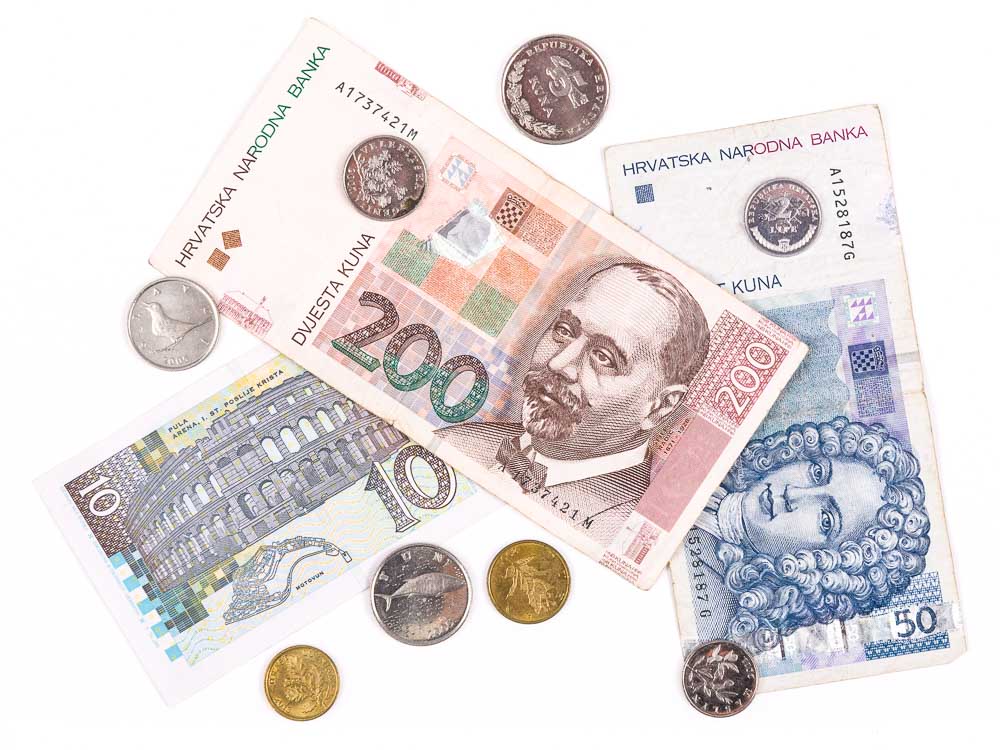
Exchange of Croatian Kuna and Lipa coins
Banks and bureaus de change in the UK generally do not exchange foreign coins. However here at Leftover Currency we exchange foreign coins from more than 100 countries. We continue to exchange Croatian Kuna and Lipa coins (100 lipa = 1 kuna), even after Croatia joins the Euro in 2023.At Leftover Currency we specialise in the exchange of foreign coins. We exchange both current coins as old coins, including coins from all pre-euro currencies, such as Austrian Schilling coins, Deutsche Mark coins, Dutch Guilder coins and many more. The whole list of currencies for which we exchange coins is here: leftovercurrency.com/exchange-rates/
The Croatian National Bank has decided that Croatian Kuna and Lipa coins can be exchanged for three years after the introduction of the Euro on 1 January 2023. Therefore Kuna and Lipa coins can be exchanged until 31 December 2025. After this deadline, Kuna and Lipa coins loose their monetary value. Here at Leftover Currency we will still be able to exchange Croatian coins even after the official exchange deadline has expired at the end of 2025. But it’s best to exchange your Croatian coins before 31 December 2025 to get the best value for them.
Get started here: Exchange your Croatian coins
What designs are on the Croatian Euro coins?
The Croatian National Bank ‘Hrvatska Narodna Banka’ (HNB) has selected the following designs for the Croatian Euro coins:- €2 euro coin: Map of Croatia
- €1 euro coin: Marten, a weasel-like mammal. The Croatian word for ‘marten’ is ‘kuna’.
- 50 cent, 20 cent, 10 cent coins: Nikola Tesla, famous inventor, born in Smiljan, Croatia.
- 5 cent, 2 cent, 1 cent coins: Glagolitic script, the oldest known Slavic alphabet
The image below shows how the national sides of the Croatian Euro coins will look. Image credit: HNB
Will more countries join the Euro zone soon?
Yes. After Croatia, the next country to join the Euro zone is Bulgaria. On 1 January 2024, one year after Croatia, Bulgaria will join the Euro zone and swap the Lev for the Euro as its national currency, becoming the 21st member state of the Euro zone.Will more countries join the Eurozone after that? We’ve answered this question in our blog article: Will more countries join the Euro zone?



 Loading
Loading